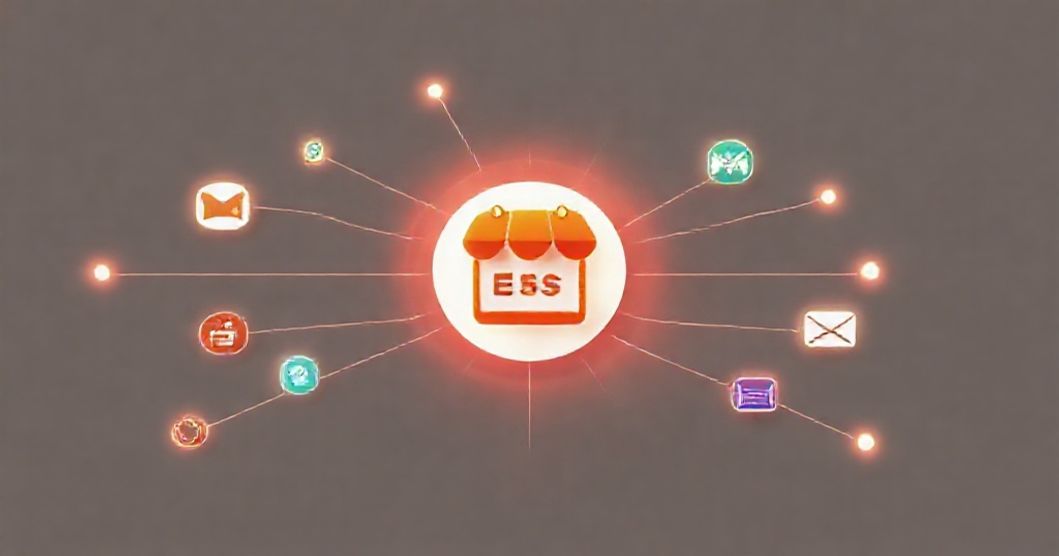In the dynamic world of online crafting and unique goods, Etsy stands as a pivotal platform for countless small businesses and individual artisans. However, scaling an Etsy shop beyond initial success often necessitates strategic planning and operational efficiency. This is where the power of Etsy integrations becomes indispensable for sellers aiming to streamline their operations and expand their reach. By seamlessly connecting your Etsy store with various external tools and platforms, you can automate mundane tasks, enhance customer experience, and ultimately drive greater profitability. Understanding the right integrations can transform your selling journey, allowing you to focus more on creativity and less on manual processes.
Understanding Etsy Integrations for Enhanced E-commerce
Etsy integrations refer to the process of linking your Etsy shop with third-party software applications designed to perform specific business functions. These connections enable data to flow between Etsy and other systems, eliminating the need for manual data entry and reducing errors. For Etsy sellers, this means a more cohesive and efficient workflow across various aspects of their business, from inventory management to shipping and accounting. Embracing these integrations is not just about adopting new technology; it is about building a robust and scalable e-commerce infrastructure that supports long-term growth and sustained success in a competitive market.
1. Inventory Management System Integrations
Effective inventory management is critical for any e-commerce business, particularly for Etsy sellers dealing with unique or limited-edition items. Integrating an inventory management system with your Etsy shop allows for real-time tracking of stock levels across all sales channels. This prevents overselling, minimizes stockouts, and ensures accurate product availability for your customers. Tools like Craftybase or Sellbrite can sync inventory, manage raw materials, and even track the cost of goods sold, offering invaluable insights into your profitability for handmade items. Such systems often provide reports on best-selling products and slow-moving stock.
2. Shipping and Fulfillment Integrations
Streamlining your shipping process is paramount for customer satisfaction and operational efficiency. Etsy shipping integrations connect your shop directly with shipping carriers or multi-carrier platforms, automating label creation, rate comparison, and tracking number generation. Services such as ShipStation, Pirate Ship, or ShippingEasy allow sellers to access discounted shipping rates, print labels in bulk, and send automated tracking updates to customers. This significantly reduces the time spent on manual shipping tasks, ensuring orders are dispatched promptly and professionally. Integrating these solutions can lead to substantial time and cost savings over time.
3. Accounting and Bookkeeping Integrations
Managing finances accurately is fundamental for the health and compliance of any business. Integrating accounting software with your Etsy shop simplifies the tracking of sales, expenses, and taxes. Platforms like QuickBooks Online, Xero, or Wave Accounting can automatically import your Etsy sales data, reconcile transactions, and generate comprehensive financial reports. This automation not only saves countless hours typically spent on manual data entry but also provides a clear picture of your business’s financial performance. Accurate bookkeeping is essential for making informed business decisions and preparing for tax season without stress.
4. Print-on-Demand (POD) and Dropshipping Integrations
For sellers offering customizable products or looking to expand their product lines without holding physical inventory, print-on-demand and dropshipping integrations are game-changers. Services like Printful, Printify, or Gelato seamlessly connect with Etsy, allowing you to design products (e.g., t-shirts, mugs, phone cases, art prints) and have them produced and shipped directly to your customers only when an order is placed. This model eliminates the need for upfront investment in inventory and manufacturing, significantly reducing risk and enabling rapid product diversification. Sellers can focus on design and marketing, leaving fulfillment to the integrated partner.
5. E-commerce Platform Integrations: Shopify, WooCommerce, and Beyond
Many Etsy sellers choose to expand their reach by establishing an independent e-commerce store on platforms like Shopify or WooCommerce. Integrating Etsy with these platforms allows for multi-channel selling, centralizing inventory, orders, and customer data. Tools such as LitCommerce, CedCommerce, or native app integrations facilitate syncing product listings and managing sales across all your storefronts from a single dashboard. This strategy not only diversifies your sales channels but also helps in building a stronger brand identity beyond the Etsy marketplace, reaching a broader customer base and reducing reliance on a single platform.
6. Marketing and Social Media Integrations
Promoting your Etsy shop and connecting with your audience is crucial for growth. Marketing and social media integrations empower sellers to automate their promotional efforts and analyze performance. Tools like Tailwind for Pinterest and Instagram scheduling, or various email marketing platforms (e.g., Mailchimp, Constant Contact) that can integrate with your customer lists, help you reach potential buyers effectively. These integrations allow for consistent branding, scheduling posts during optimal engagement times, and tracking the effectiveness of your marketing campaigns. They free up time for creative pursuits by streamlining repetitive promotional tasks.
7. Customer Relationship Management (CRM) Integrations
Building strong customer relationships is vital for repeat business and positive reviews. CRM integrations help Etsy sellers manage customer interactions, feedback, and purchase history more effectively. While direct CRM integrations for Etsy might be less common than for other platforms, sellers can often export customer data to external CRM systems like HubSpot or Zoho CRM for more personalized communication and follow-ups. This allows for targeted marketing efforts, personalized customer support, and a deeper understanding of customer preferences, fostering loyalty and enhancing the overall shopping experience with your brand.
Maximizing Profitability Through Strategic Etsy Integrations
The strategic implementation of Etsy integrations offers a clear path to maximizing profitability and achieving sustainable growth for your online shop. By automating key business processes, sellers can drastically reduce operational costs, minimize manual errors, and reclaim valuable time that can be reinvested into product development or marketing. Whether it’s through optimized shipping rates, precise inventory control, or seamless financial tracking, each integration contributes to a more efficient and lucrative business model. Carefully evaluating your shop’s specific needs and selecting the most beneficial integrations will enable you to scale your Etsy venture effectively and confidently.




